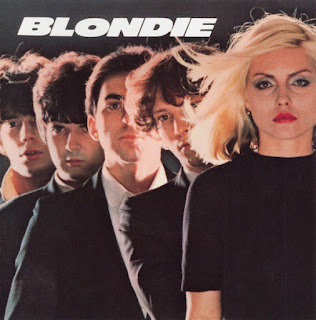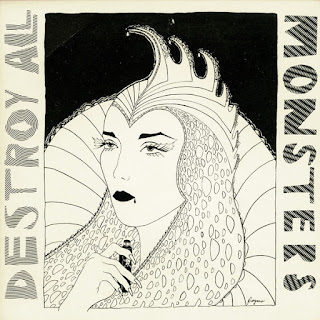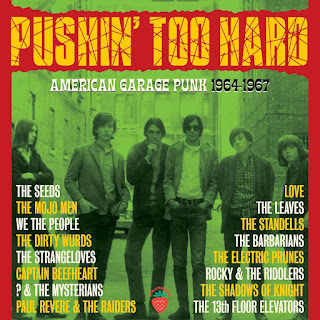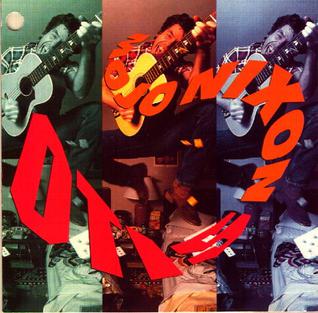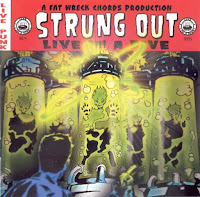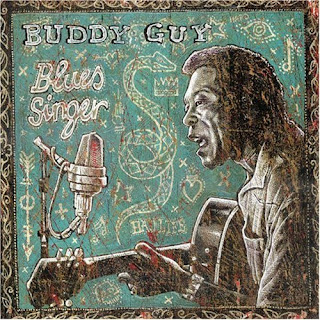The decade of the 1960s is notable for many pioneering efforts in film, fashion, music, and social activism, most of which have long since fallen out of the cultural zeitgeist, to be forgotten until some corporate interest needs to resurrect a specific cliché to cash in on and pump-up profits in the name of blind nostalgia. However, one of the lesser-known aspects of ‘60s-era music has refused to go quietly into that good night, remaining relatively underground and continuously flowing beneath the mainstream as the years passed by to influence generation after generation of young rock musicians.
Often a mere ‘blip’ on the pop culture radar during the ‘60s, garage rock nevertheless struck a chord with a specific group of music fans looking for raw authenticity and wild sounds. Every now and then a garage rock band like the Standells (“Dirty Water”) or Count Five (“Psychotic Reaction”) would strike gold with a Top 30 chart hit, but more frequently, worthwhile and imaginative bands like the Remains or Blues Magoos toiled in obscurity, only to be re-discovered years (or decades) later. Garage rock itself was resurrected for a while in 1972 when Elektra Records released the two-LP
Nuggets compilation album. Curated by future Patti Smith Group guitarist and best-selling author Lenny Kaye,
Nuggets – subtitled “Original Artyfacts From the First Psychedelic Era” – jumpstarted a late-decade garage rock scene that yielded bands like the Unclaimed, the Chesterfield Kings, the Fuzztones and many others that kept rock ‘n’ roll interesting during the 1980s and ‘90s.
Pushin’ Too Hard: American Garage Punk 1964-1967
There were multiple Nuggets compilations released subsequent to the original, as well as copycats and Nuggets-inspired collections like Pebbles, Rubble, Back From the Grave, and Killed By Death. An expanded Nuggets was reissued last year as a deluxe 50th anniversary vinyl box set and accompanied by live performances by Kaye and friends on both coasts…heck, I even wrote a book about the original Nuggets album. England’s Cherry Red Records has released numerous Nuggets-adjacent compilations but, with Pushin’ Too Hard: American Garage Punk 1964-1967, they drill down into the genre with what is perhaps the most comprehensive collection of obscure tunes yet. Released through the label’s Strawberry Records imprint and packaged in Cherry Red’s trademark clamshell box, the three-CD set offers 94-tracks of the purest and heaviest punky garage jams as you’d ever want.
Responding to the announcement of the release of Pushin’ Too Hard, some wag on Facebook smarmily commented something along the lines of “why do we need this set when we have Nuggets?” A good question, if somewhat disingenuous but, to be honest, Pushin’ Too Hard picks up the challenge that the original Nuggets laid down like no collection since the first couple of Pebbles albums were covertly (and pseudonymously) released by Greg Shaw. Sure, there are some overlaps between these 94 songs and multiple Nuggets releases, and well-worn tracks from bands like the Strangeloves, the Castaways, the Seeds, and the Remains will be familiar to even the most casual fan of ‘60s music.
But where Pushin’ Too Hard really shines is by presenting and preserving more obscure garage rock nuggets by not only those marquee artists but odds ‘n’ sods ‘n’ true rarities that all but the most rabid collector may not have heard. As a public service to my loyal readers, here are 16 reasons to check out Pushin’ Too Hard just as soon as the credit card charge clears and the postal representative jams the package into your greedy lil’ hands:
1. The Denims - “I’m Your Man”
This Queens, New York sextet recorded but a handful of songs for Columbia Records and Mercury before disappearing into the blank void of obscurity but damned if “I’m Your Man” (1965) isn’t a gleeful combo of rockin’ drumbeats, buried vocals, sparkling fretwork, and an overall psych-drenched “wall of sound” that should have been blasting hourly from thousands of transistor radios across the country. Although the song’s intertwined guitars are fab, it’s drummer Mike Zaccor’s insistent, locomotive timekeeping that sends “I’m Your Man” into the stratosphere.
2. The Brogues - “I Ain’t No Miracle Worker”
The Brogues, hailing from Merced, California, obviously drew inspiration and more than a little influence from the Rolling Stones and the Pretty Things, but their take on “I Ain’t No Miracle Worker” may be the best version of the often-covered psych-garage gem, beating out versions by the Chocolate Watchband and the Barracudas to take the gold medal. Gary Cole’s (a/k/a Gary Duncan) R&B-tinged vocals are pitch-perfect for 1965 while lead guitarist Eddie Rodrigues sparks up a bonfire with his twisted solos. Duncan and drummer Greg Elmore would later transition from garage fumes to lysergic-fueled psychedelia as members of Quicksilver Messenger Service.
 |
| Roky Erickson photo courtesy Sire Records |
3. The Spades - “You’re Gonna Miss Me”Although the original
Nuggets LP included Texas psych casualties the Thirteenth Floor Elevators’ version of Roky Erickson’s classic “You’re Gonna Miss Me,” it was originally recorded by Roky’s outfit the Spades, and it shines like a crazy diamond here tucked, as it is, between the Standells’ R&B rave-up “Rani” and the Lyrics’ “So What!,” which sounds like John Sebastian and the Lovin’ Spoonful on speed and cough syrup. Roky was a tender 18 years old when the Spades recorded this 1965 single, and Erickson’s manic harmonica riffs are front and center, providing a nice contrast to the Elevators’ enervating electric jug sound.
4. The Thirteen Floor Elevators - “Tried To Hide”Speaking of the Elevators, Pushin’ Too Hard doesn’t include that song, but rather the B-side of the 1966 single, the raucous punk-blues tune “Tried To Hide.” Featuring Roky’s raging harpwork, scrappy git licks, minimal melody or rhythm, but lots of beery noise, random shouting, and general budget studio hijinks. This mono 45rpm version is rawer and more ramshackle than that which would later appear on the Elevators’ debut LP,
Psychedelic Sounds of the 13th Floor Elevators.
5. Paul Revere & the Raiders - “Just Like Me” Because of their late ‘60s commercial success, Paul Revere & the Raiders are often-overlooked garage rock giants that walked the walk.
Pushin’ Too Hard goes for the band’s deep cut “Just Like Me,” a 1965 single released in glorious mono and featuring all of the hallowed hallmarks of garage rock royalty – snotty, snarling vocals; chiming keyboards that prop up the rhythm; wiry, scratching-post fretwork; and an overall lo-fi, high-octane performance custom-made for maximum AM radio airplay.
6. Captain Beefheart & His Magic Band - “Diddy Wah Diddy”Technically a
Nuggets track, appearing on volume six of Rhino Records’ seemingly never-ending plundering of the concept released on a series of CDs in the 1980s, I’m gonna include it here ‘cause the Captain never sounded more like Howlin’ Wolf than he does on this inspired 1966 cover of the fabulous Bo Diddley song. Guitarist Doug Moon scrapes the strings like Link Wray turbocharged, and the entire band teeters like toddlers sotted on rotgut whiskey.
7. The Outcasts’ - “I’m In Pittsburgh (and It’s Raining)”Straight outta San Antonio, Texas come the Outcasts, whose 1966 single was inspired by an Anthony Quinn line from the 1962 film
Requiem For A Heavyweight. The Outcasts’ performance is as gritty as Quinn’s washed-up boxer from the movie, punch-drunk Bo Diddley-styled rhythms driving Jim Carsten’s sneering vox and invigorating rhythm guitar, Denny Turner’s switchblade leads, and harp player Buddy Carson’s icy blasts.
8. Rocky & the Riddlers - “Flash and Crash”The 1966 single “Flash and Crash” is an obscurity’s obscurity; originally appearing on the second volume of Tim Warren’s cult compilation
Back From the Grave, the song is a bluesy, R&B rave-up with martial rhythms, underlying keyboard licks, nearly-buried lyrics, amateurish arrangement, and an overall smothering performance that will leave the listener gasping for air before queuing the song up to play again…
9. The Unusuals - “I’m Walking Babe”Another of the great Pacific Northwest bands that helped define garage rawk in the ‘60s, the Unusuals’ “I’m Walking Babe” stands proudly alongside the Sonics’ “You’ve Got Your Head On Backwards” as
Nuggets-adjacent tracks that, for some reason, never made it to the major leagues. The Unusuals are over-the-top even by garage standards, with Vic Bundy’s circular keyboard riff providing a foundation for bassist Harvey Redmond’s whiskey-and-broken glass vocals and the jagged fretwork of guitarists Laurie Vitt and Bill Capp. The result is pure white light that threatens to go supernova at any moment.
10. Link Ray & the Raymen - “Hidden Charms”Link Wray’s Top 20 charting 1958 instrumental “Rumble” is a classic of switchblade guitar twang, the song subsequently appearing on a couple dozen surf-rock, rockabilly, and trash rock compilations. “Hidden Charms,” credited here to Link Ray & the Raymen, was a 1966 single that features a rare Wray vocal turn above the din of clashing instruments, shabby cheap-o production, and flamethrower guitar that steals the Willie Dixon-penned blues classic out of the great Howlin’ Wolf’s catalog and mutates the song into the sort of shambolic, ramshackle punk-blues gem that the White Stripes and the Black Keys would kill to have recorded.
11. The Standells - “Barracuda”The Standells are
Nuggets royalty, if only for their undeniably-soulful R&B romp “Dirty Water,” but the band’s “Barracuda” is equally awesome. Written by the band’s producer Ed Cobb (whose songs have been covered by artists as diverse as Soft Cell, The Clash, and George Clinton), “Barracuda” was released as a single in 1967 from the Standells’ final album,
Try It, and should have been a monster hit. Punkier than “Dirty Water,” with a dense soundtrack of chiming instruments and fierce vocals, it was released at the ass-end of the garage rock tsunami and failed to gain any traction with record buyers.
12. The Rationals - “I Need You”Motor City rockers the Rationals masterfully blended pop, rock, and classic R&B with an original sound fueled by singer Scott Morgan’s Mitch Ryder-styled, blue-eyed soul vocals. Although the band has been featured on various Michigan-specific anthologies (most recently on Ace Records’ excellent
An A-Square Compilation LP), they were largely shut out of the
Nuggets sweepstakes. Still, the band’s 1967 cover of the Kinks’ “I Need You” amps up the energy of the original with Morgan’s blistering vox and guitarist Steve Correll’s incendiary leads. Morgan would later hook up with fellow traveler Fred “Sonic” Smith of the MC5 in beloved Detroit/Ann Arbor-area cult-rockers Sonic’s Rendezvous Band.
13. Roy Junior - “Victim of Circumstances” “Victim of Circumstances” is an oddball choice for
Pushin’ Too Hard, the Roy Junior in question the son of country legend Roy Acuff and a country artist by trade. This 1966 single seems like a blatant attempt at scoring a hit in the garage rock sweepstakes and plays a lot like what a Music Roy exec thought that a garage rock single
should sound like. Inching close to self-parody, with inane lyrics (“I was raised on knuckle sandwiches…in a jungle of knives and chains, had to fight to live”) sung by a privileged nepo-baby, the song’s low-rent production, slumming studio professionals, and laughable performance is just greasy enough to pass for authentic garage, becoming a minor regional hit because not much else was going on in the Mid-South area at the time…
14. Front Page News - “Thoughts”The only single released by the Tulsa, Oklahoma bred Front Page News, “Thoughts” balances uneasily on the razor’s edge between feedback-laden garage rock and taut lysergic psychedelia. Released in 1966, “Thoughts” was probably nine months to a year ahead of its time, and the band was never heard from again. Still, it’s a fine, frenzied performance that would appeal to fans of either 1966
or 1967…
15. The Jefferson Handkerchief - “I’m Allergic To Flowers”Best I can tell, The Jefferson Handkerchief’s “I’m Allergic To Flowers” has never previously been anthologized on any comp, not even
Pebbles or the
Grave series, tho’ it was covered by something called Vicky & Dicky, a New Zealand duo who scored a hit with the satirical anti-hippie send-up. The Jefferson Handkerchief was a fake band comprised of studio professionals and Challenge Records label staff songwriters having a bit of fun at the expense of youthful “Flower Power” movement, but it’s a helluva lot of fun anyway!
16. The Bedlam Four’s - “No One Left To Love”Another
Pushin’ Too Hard exclusive, the Bedlam Four was a short-lived group of ambitious young rockers from Hastings, Minnesota who successfully evolved from Top 40 mimicry to righteous blues-rock mimicry with the addition of new singer/drummer Rich Pogue. Sporting a playlist peppered with Muddy Waters and Yardbirds covers, “No One Left To Love” was a Pogue-penned original and a mighty fine one at that, strutting and stomping with reckless abandon across every rich note and riff they could find in the Chess Records catalog, spiced up with budget production and noisy mastering that shakes, rattles, and rolls off the turntable, ultimately bludgeoning your ears into submission.
The Reverend’s Bottom Line
Truth is, I’ve only scratched the surfaces of the groovy sounds and anarchic rawk ‘n’ roll you’ll find on Pushin’ Too Hard, and most of the songs here never staggered anywhere near a Nuggets compilation album in any of its many guises. If the 16 reasons provided above aren’t motivation enough to get you up off the couch and down to your local music emporium, how ‘bout deep tracks from the Seeds, the McCoys, the Misunderstood, Dirty Wurds, We The People, the Sonics, Zakary Thaks, Thursday’s Children, and the Checkmates, among many others? The set also includes a groovy 44-page color booklet with notes on every band and song, plenty of rare photos and other cool graphics that should pacify even the most fanatical of fanboys. At the low, low cost of around 36-cents per song, the set deserves a place in your collection. (Strawberry Records/Cherry Red Records, released 2023)
Buy Pushin’ Too Hard from Amazon


